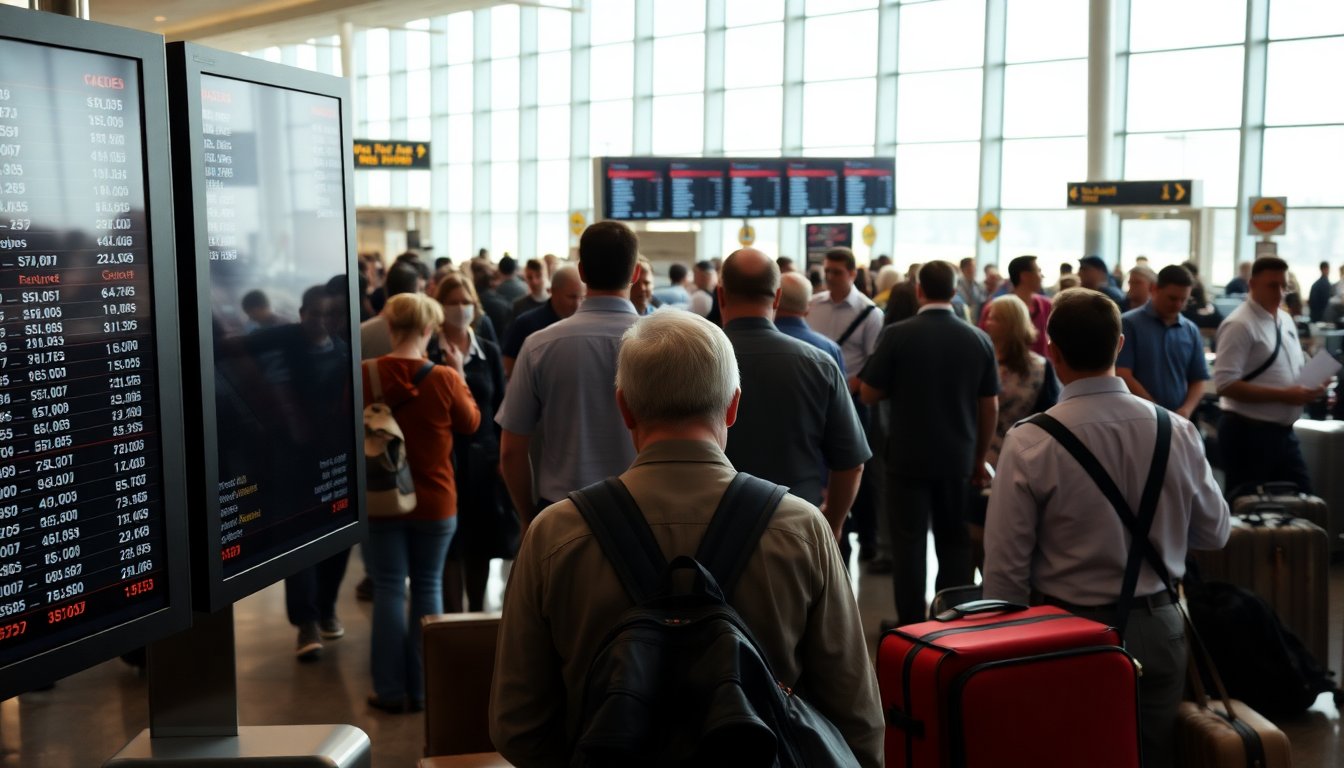Table of Contents
The ongoing federal government shutdown, now extending into its 38th day, has resulted in significant reductions in air traffic across the United States. This decision, supported by lawmakers from both parties, aims to prioritize the safety of air travelers amidst the disruption.
Thousands of federal employees are furloughed, and many essential workers, including air traffic controllers, are working without pay, creating unprecedented challenges for the aviation industry.
Representative Greg Stanton from Arizona has endorsed the Trump administration’s decision to cut flights at the nation’s busiest airports, emphasizing that public safety must remain the top priority.
His comments reflect growing concerns about the implications of the shutdown on the aviation sector.
Bipartisan support for air traffic management
In a recent statement, Stanton noted, “Safety must always be the highest priority” for the aviation sector. He believes that reducing flights at approximately 40 major airports is a necessary step.
The Federal Aviation Administration (FAA) has mandated a 4% reduction in air traffic, which could escalate to a 10% cut if the shutdown continues beyond mid-November. This measure is intended to ensure that the National Airspace System can function effectively while adhering to safety standards.
Essential workers facing hardships
The effects of the shutdown are particularly stark for essential aviation personnel. Air traffic controllers and Transportation Security Administration (TSA) officers are currently required to work without compensation, prompting some to seek additional employment to support their families.
This situation has led to rising reports of absenteeism among controllers, exacerbating staffing shortages at critical air traffic locations.
Travelers are already experiencing the fallout from these staffing issues. For instance, travelers at the Phoenix Sky Harbor International Airport have faced delays averaging nearly two hours due to the ongoing restrictions.
Flight-tracking services indicate that hundreds of flights have been delayed or canceled, signaling a potential crisis in air travel management.
Concerns about future impacts
Transportation Secretary Sean Duffy has warned that further delays and cancellations could occur if the shutdown continues. Duffy emphasized that without sufficient air traffic controllers, the FAA may need to implement more drastic measures, including the temporary closure of certain airspace sectors. Such actions could lead to what he described as “mass chaos” in air travel.
Despite these challenges, Representative Stanton remains optimistic about the potential for bipartisan negotiations in Congress. He advocates for a swift resolution to the shutdown, stating that it is critical for both parties to collaborate to address the budget impasse. He remarked, “Arizona deserves better, and so do the hardworking professionals who keep our skies safe.” This sentiment underscores the urgent need for cooperation in government.
Healthcare concerns tied to funding negotiations
While discussions continue, a significant point of contention remains the inclusion of healthcare funding in any new budget agreement. Democratic leaders are advocating for the extension of enhanced subsidies related to the Affordable Care Act, which are set to expire soon. Republicans have opposed these efforts, arguing against coupling funding bills with unrelated policy measures.
As the shutdown persists, the impact on air travel and public safety grows increasingly severe. With critical programs facing funding shortages, the potential for widespread disruption looms larger. Travelers and airline personnel are left in a state of uncertainty, hoping for a resolution that prioritizes safety and operational continuity.





